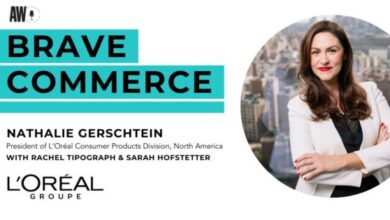
Fewer mass moments and the allure of personalized targeting are reflected in the marked decline in advertising effectiveness in IPA case studies observed in Binet and Field’s analysis since 2012.
Fame is still the answer
Let’s not abandon hope prematurely. As the advertising great John Hegarty said: Principles remain, practices change.
Binet and Field define fame-driving activities as any activation that sparks conversation, whether in the digital realm or the comfort of one’s living room. Fame remains the key to unlocking incremental sales, profitability and sustaining price premium, among other business effects. Advertisers need both types of fame: overarching (being known by many) and resonating (being desired by many).
The internet amplifies the reach of those who ascend its ranks. Take Tube Girl: Sabrina Bahsoon’s video catapulted her overnight from the London Underground to the echelons of Paris Fashion Week and partnerships with MAC Cosmetics and Bentley.
Memes suggest a culture that desperately seeks shared community. Some are born from cultural moments mixing with the innate weirdness of the internet—see Kendall Roy’s transformation into social media’s favorite “babygirl,” or “He’s just Ken” fueled by the all-conquering Barbie phenomenon this summer. Others, such as the Anakin-Padme meme, are more slow-burn, accruing widespread meaning over time until they hit a critical mass where universal comprehension allows for subversion and playful riffing.
Internet culture has become mainstream culture—”As Seen on TV” has been replaced with #TikTokMadeMeBuyIt.
How to be internet famous
A key driver of fame is standing out from the sea of conformity. Algorithms reward arresting and distinctive content with eyeballs, and consumers reciprocate with their wallets further down the line.
In May 2022, 91% of those aged 18-25 in the U.S. agreed, “There is no such thing as mainstream pop culture anymore.” But the question was just a tiny bit leading. After all, we’re also told Gen Z “prefer brands with a sound ethical purpose” in a world where Shein exists.
It’s a paradox that culture among young people is both more complex and more homogenous than previous generations. The distinct cultural codes, music, dress and style of different subcultures—goth, punk, techno, grunge, emo, indie—have been replaced by a more fluid, multifaceted outlook, dipping in and out of different interests and passions like a cultural magpie.
Young people arguably now exist in a more globalized, shared culture, with more common ground between them than is assumed. This means new ideas can be quickly shared across borders to millions of people. However, it is much harder to build mass reach and consensus across generations.




